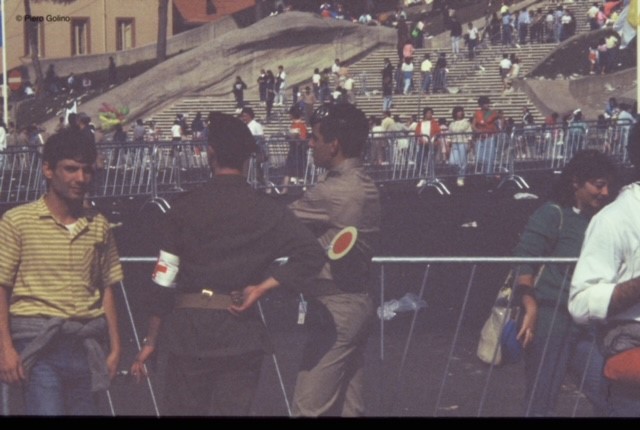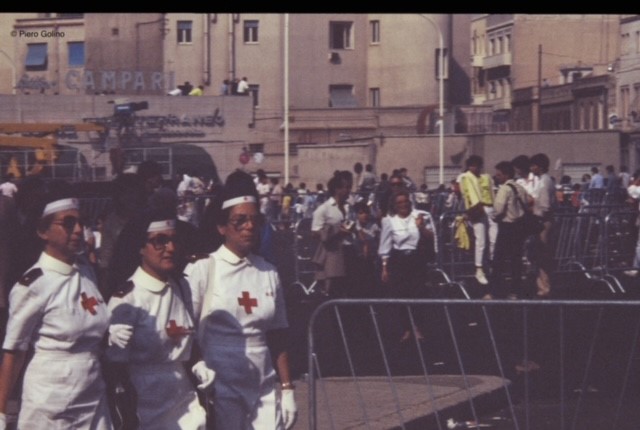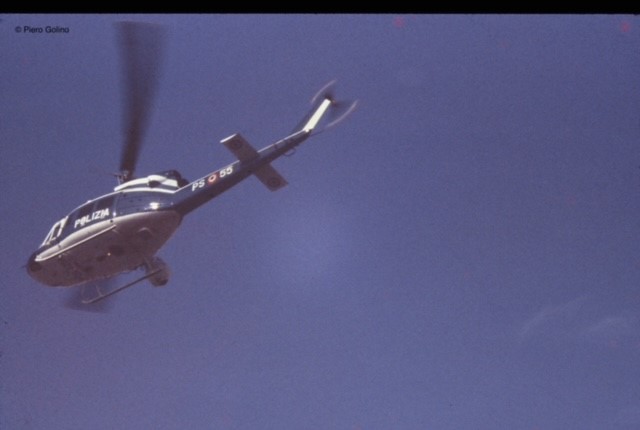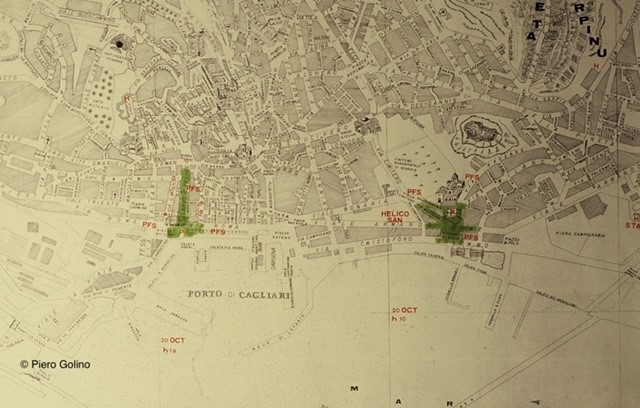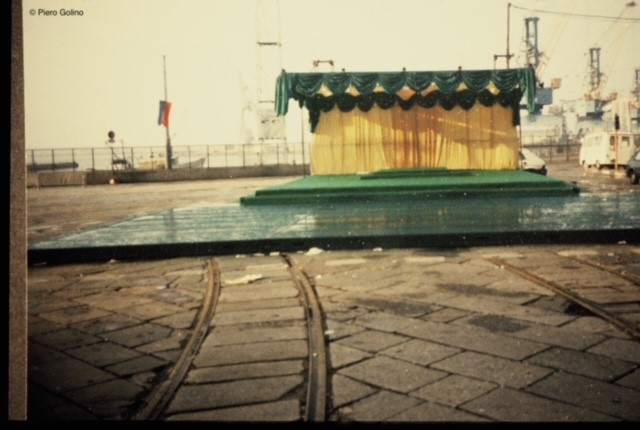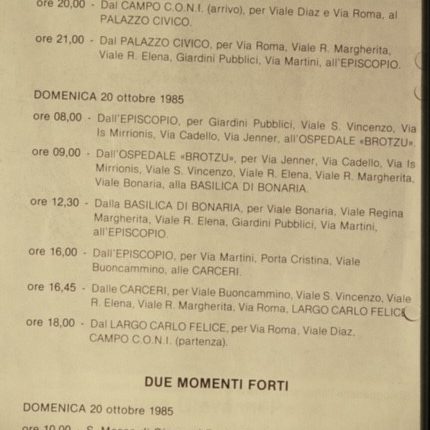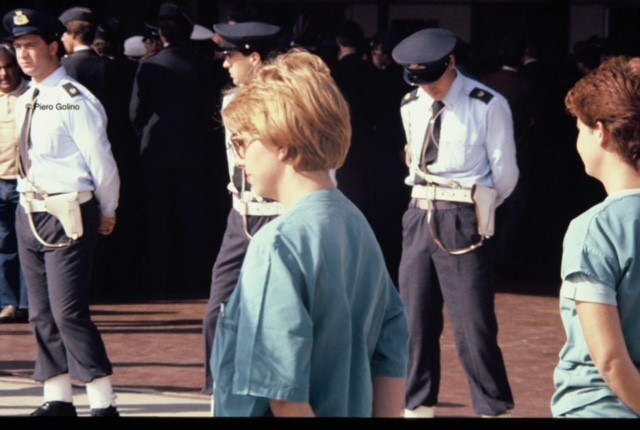
Piero's Diary - History of the single number for out-of-hospital rescue in Sardinia
And forty years of news events seen from the unique perspective of a physician-resuscitator always on the front lines
A prologue… Papal
January 1985. The news is official: in October Pope Wojtyla will be in Cagliari. For a physician-resuscitator who has had it in his head for years to succeed in organizing an efficient out-of-hospital medical rescue service, it is one of those pieces of news that take away sleep, that make one think, dream…Perhaps it is the right time, it is a sign of destiny. That pastoral visit is no accident. After so much experimenting, with doctors in ambulances or rushing in primitive motorcycle-ambulances on which there is nothing but a few irons of the trade in the glove box, perhaps the time has come to organize something serious, something big, never even thought of before at major events.
Yes, because before, exactly in April 1970, the year of Cagliari’s soccer championship, another Pope, Montini, Paul VI, had been in our city and to see and hear him, in the large square below the Basilica of N. S. di Bonaria, next to the Hotel Mediterraneo, as many as one hundred thousand people had gathered, it was said: that is precisely why that square has since then officially taken on that name, Piazza dei Centomila. Well, Bonaria and Piazza dei Centomila aside, after a visit of Paul VI to the Cagliari neighborhood of Sant’Elia, there were then protests, riots, stone pelting. And in short, for the relief effort undoubtedly there had been some little problems.
Now, however, the experts’ forecasts spoke of as many as 200,000 people expected in Cagliari for that extraordinary event, and so presumably the problems of serious and organized on-site health care, outside the hospital in fact, would have been enormous. Certainly the Prefecture would have urged the relevant bodies to provide adequate medical relief coverage for the event. Which punctually occurred in a very short time.
I thought of previous experiences with fellow resuscitators, nationally and internationally: in Paris with SAMU (Urgent Medical Aid Services) personnel, who operated in plain clothes carrying duffel bags with medical equipment, or in Lombardy, in Varese, particularly on the occasion of the Pontiff’s own planned transit through a rough place to a country shrine, perhaps in the rain. These were all experiences, personally experienced by me albeit as an attentive and interested spectator, which had nevertheless been rich in insights and suggestions.
The fact is that in those very early months of ’85 -already involved in civil defense- I was summoned to a meeting of a committee -today it would be called a Crisis Unit- to which military, civilian, health and volunteer personnel had been invited. Among the many things discussed, a seemingly minor problem also emerged: who was supposed to physically retrieve the people who might be taken ill or otherwise in need of rescue to be provided at the centers that would be set up near the square? The answer, for me, given precisely previous experience, was relatively simple, and I also proposed the number of people needed: 200 conscripts.
“You see too many American movies!” a health executive present at the meeting told me. “True -I replied- Tell me about your proposal then!” Needless to add, he had none. And so in the end we managed to get from the Army the availability of not 200 but 80 conscripts acting as stretcher bearers, 16 military doctors, 8 ambulance cars, a helicopter.
Added to this “force” were 32 health care assistants, 50 rescue volunteers, 35 crucifixion nurses and 34 resuscitation nurses, 4 resuscitation ambulances (i.e., equipped with oxygen, aspirator and automatic respirator and on board of which, above all, there were a doctor and resuscitation nurse) that were provided to us by the local health units (the then “Local Health Units” that were later transformed into ASLs, i.e., “local health agencies”); still 12 “normal,” basic ambulances (i.e., without a doctor on board and with “volunteer” and non-professional personnel), two bloodmobiles from Avis (Blood Donor Association). This was for the vehicles; as for civilian medical personnel, on the other hand, a deputy medical director, on the occasion Dr. Franco (Kiki) Trincas, three internists and 14 resuscitators arrived.
Then there was the need for an efficient radiocommunication service, a need that just when all preparations seemed to have been resolved, an engineer from the Civil Defense of the Provincial Administration suggested to me, reminding me that the amateur radio operators of the Province of Cagliari had already acquired considerable experience: their contribution had been decisive, for example, in the relief efforts during the 1980 Irpinia earthquake. And for that they had had the appreciation of the then national head of Civil Defense, Giuseppe Zamberletti. On the occasion of Wojtyla’s three days on Sardinian soil they would prove invaluable, especially on the first day, when the Pope, before Cagliari, went to Iglesias (a municipality in the province of Cagliari).
So it was, however, that, since mobile telephony did not yet exist and therefore could not count on today’s “cell phones,” we “hired” 22 radio operators from the Province, including the drivers of the off-road vehicles, so to speak, “radiomonted.” In short, a total of more than 280 health workers could constitute a good number for an efficient “roadside” health rescue service.
The plan therefore on paper was ready and had the approval of Professor Lucio Pintus, Health Superintendent of our Local Health Unit No. 21, which was based at the new St. Michael’s Hospital named after the discoverer of Cephalosporins and former mayor of the city, Giuseppe Brotzu. The plan, however, was ready. And now it was just a matter of putting it into practice.
Dr. Piero Golino – doctor
Andrea Coco (former RAI 3 journalist) – texts
Michele Golino – image research
Enrico Secci – graphics




